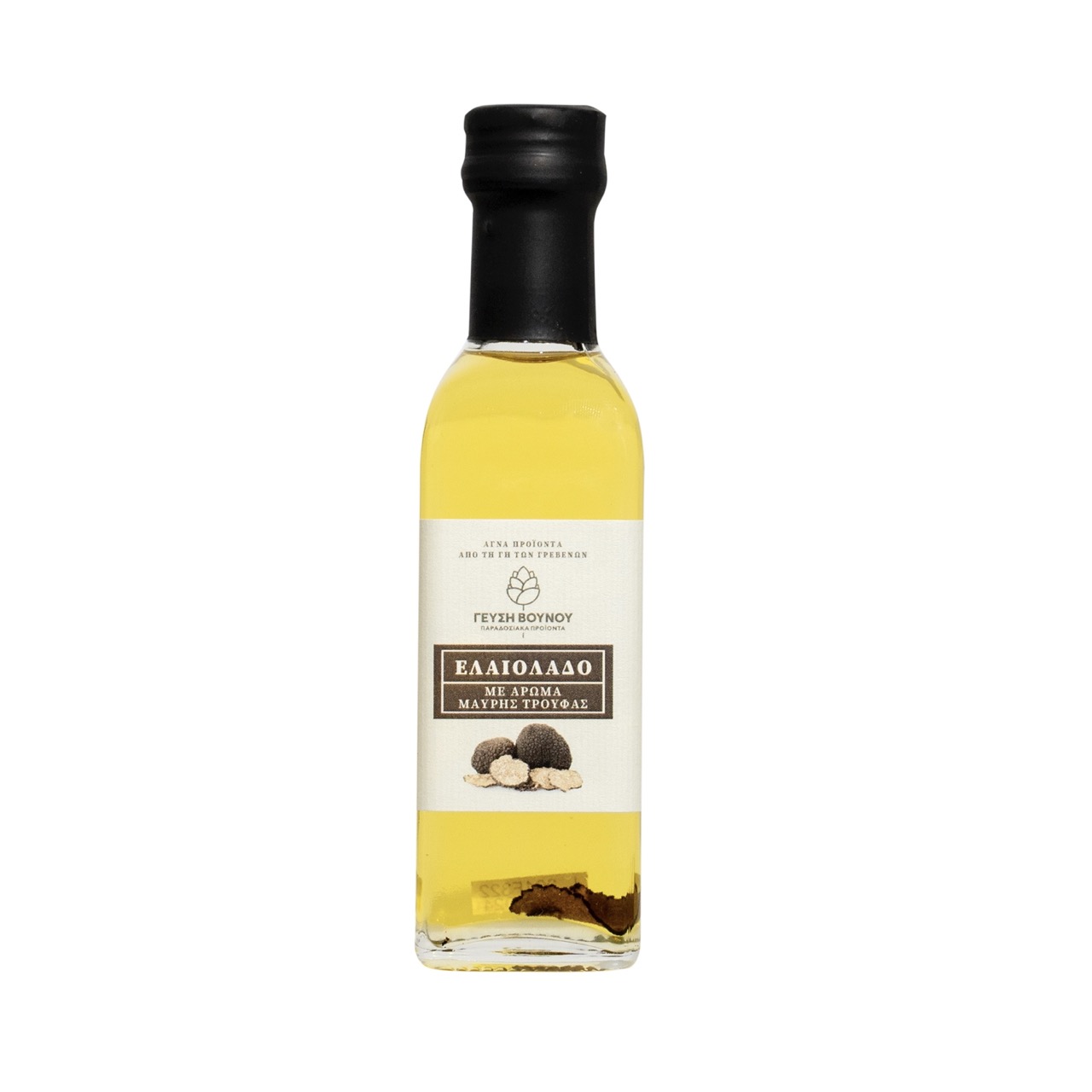Join our Newsletter
Ethnarxou Makariou 149, 17235, Dafni, Greece | info@dakryolive.com

Hidden deep in the earth, the truffle is believed by some to rely on symbiotic relationships with other organisms for nourishment and growth, while others attribute its success to its own determination. Recognizing its value, the truffle chooses to remain hidden from those who do not appreciate its delicacy, rather than drawing nourishment from the roots of the trees below ground. Only its enticing scent betrays its presence, leading truffle hounds and foragers to scour the mountains in search of it. These skilled seekers, often accompanied by specially trained animals, embark on a quest for wealth and fame by harvesting this precious mushroom. Whether foragers or growers who cultivate truffle-friendly environments at high altitudes, those who participate in this endeavor, known as the “Truffle Hunt,” appreciate the elusive nature of their quarry, discerning only subtle clues, such as the indicative circle of soil surrounding a tree. guide their efforts.
In ancient Greece, truffles were considered a luxurious spice that enhanced the flavours of fine dishes, as evidenced by historical accounts of lavish banquets. Today, truffles are not commonly used in Greek households due to the lack of traditional recipes and their high cost. However, truffles remain a prized ingredient in upscale mountain restaurants and fine dining establishments, where they are renowned as a gourmet delicacy.
Greece boasts an exceptional range of truffle harvesting regions, each with its own unique charm and allure. From the enchanting landscapes of Grevena and Voio in Kozani to the magical kingdoms of Pindos and Kaimaktsalan in Edessa, these regions offer unparalleled treasures of truffles. In addition, the enchanting locations of Belles of Serres, Olympus, Paggaio of Kavala and Serres, Falakro of Drama, Taygetos of Lakonia, Paiko of Kilkis, Kalambaka in the wider region of Trikala and the sunny paradise of Crete in the summer months. , all contribute to the remarkable heritage of the truffle of Greece.
The exquisite delicacy known as truffle
The truffle, which looks like a ball with intricate textures in its skin, grows subtly underground at depths of up to 40 cm. Often hidden under fallen foliage, the elusive white truffle can be found in the deeper levels of the 30-40 cm subsoil. This unique fungus forms a symbiotic relationship with specific trees and shrubs, drawing nutrients from its host while providing essential sugars for growth. Truffles, as heterotrophic organisms, rely on this connection with their environment to thrive. Trees such as hazelnuts, poplars, poplars, oaks, pines, linden, willows, cedars and even holly are vital for the cultivation of these precious delicacies.
The artful cultivation of the precious delicacy truffle.
The ideal conditions for growing truffles include limestone-rich soil and an altitude of between 300 and 700 metres, free from excessive moisture. It is important to avoid spraying or fertilizing truffle trees, as this will harm the sensitive fungus. Contrary to popular belief, the presence of ferns does not necessarily indicate the presence of truffles, as truffles thrive in acidic soils. In the Alba region, where hazelnut trees abound, we are fortunate to have access to top quality hazelnuts, essential for the creation of the world-famous pralines. These trees also serve as a natural habitat for the growth of melanospores. Greece has recently started similar truffle cultivation efforts, having imported grafted trees from Italy, France and Spain, consisting mainly of oak, aria (a non-deciduous variety of oak) and hazelnut. The results of these efforts are eagerly awaited.